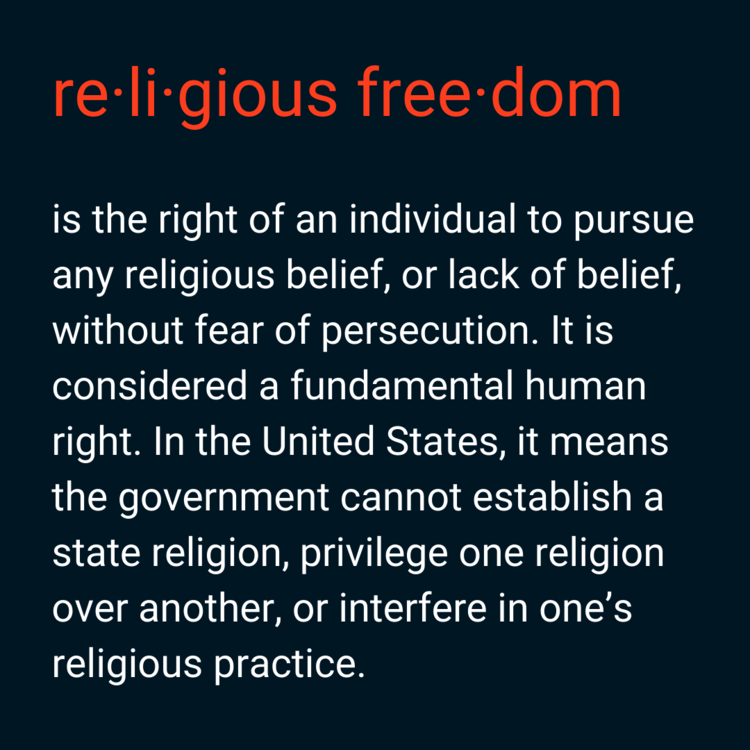In an 1802 letter to the Danbury Baptists, Thomas Jefferson wrote: “Believing with you that religion is a matter which lies solely between Man and his God … I contemplate with sovereign reverence that act of the whole American people which declared that their legislature should ‘make no law respecting an establishment of religion, or prohibiting the free exercise thereof.’”
In this letter, Jefferson set out the Founding Fathers’ two pillars of American religious freedom: the Establishment Clause, which bars the government establishing a state religion or endorsing one religion over another, and the free exercise clause, which bans the state from interfering in religious practice. Since then, these have become fundamental tenets of American society. Indeed, it is almost impossible to imagine an America where the government imposes its faith on you and where you can’t freely express your beliefs, whatever they may be. Yet, in some parts of the country, this is already happening.
Imagine that you are in your junior year of high school, and your family has recently moved from the North East to a small town in rural Texas because of your father’s work. Your parents enroll you in a public school in a traditionally Catholic nearby town (while you were raised Christian, you identify as atheist). The transition to a new state has been tough, as you’ve had to move half the country away and leave behind your close friends and your way of life. But you have to make the most of your new situation. You also plan on working hard to get the best grades you can, so you can go to a college with a good pre-med program and follow your dream of becoming a doctor.
Your first week at your new school isn’t too bad. The weather is a lot nicer in the South, and the school has well-funded sports facilities, which you take advantage of by joining the JV Basketball team. It’s a close-knit group, and you immediately make a couple of friends. A few days later, you also try out for the school choir on the recommendation of someone on the team. And you’re offered a spot! You’re beginning to actually like this new school, despite your initial apprehensions. However, things soon begin to change.
After going to a couple of choir practices, you realize the choir exclusively practices and sings Catholic hymns. You don’t feel very comfortable singing these songs as an atheist, and you’re surprised this is even allowed at a public school, so you approach the teacher in charge with your concerns. She hears you out, but says that’s how it’s always been done and no one else has ever complained. You don’t want to make a big deal out of this, so you respectfully tell her the choir isn’t for you and decide to focus on basketball.
This incident worries you. You knew that folks in the South were more religious and didn’t have a problem with it, but you’re still surprised by such overt Christian symbolism. To make matters worse, the next morning the principal announces on the PA system that the optional weekly after-school Mass will begin in the school chapel later that day. There’s a chapel? And school-sponsored Mass? At first, you don’t attend, until you realize that almost everyone you usually hang out with goes there. So do much of the faculty, as well as the principal himself. This deeply troubles you. At the same time, you really don’t want to feel like an outsider, and so despite your beliefs, you start attending Mass to fit in. This doesn’t feel right, but neither does having no friends. Maybe if you make this compromise with your values, you could fit in?
However, you soon realize this is impossible.
Your first Biology class of the semester begins with the teacher stating that evolution is an “unproven theory” with no scientific basis. He tells the class to open their textbook to the relevant chapter, and you are left astounded when you read in the first line “In the beginning, God created the Heavens and the Earth.” Not only is the teacher a creationist, but the school is actively promoting this agenda in their curriculum. This goes entirely against your principles. What’s more, you are very worried this sort of education will leave you unprepared for college science courses.
At the end of class, you are clearly upset. And when a couple of your basketball friends ask you why, you tell them in confidence that you affiliate as atheist and don’t agree with the teacher’s message. They look surprised but do not immediately respond. Over the next few days, though, they act increasingly hostile towards you and no longer sit with you at lunch. After a week, you realize the entire basketball team is beginning to exclude you from team bonding activities. This unexpected cold shoulder continues into practice, where your teammates start to pass you the ball less, and you become more and more demoralized. After your performances worsen, your coach tells you he is getting frustrated by your attitude, and drops you from the starting line-up. This is the tipping point. What you told a couple of supposed friends in confidence has left you socially isolated and excluded. You wish you had never transferred to this school. But your parents just moved and the next closest high school is a 40-minute drive away. You’re stuck here. You soon drop the basketball team, and you become more introverted and unhappy. Your grades start to really suffer as a result, and your dreams of going to a good college are slipping away.
The discrimination in this story may sound extreme, but unfortunately many parts of it could have happened. Religious discrimination on sports teams is illegal, but what could have been done in our story to remedy the boy’s situation? For all the coach knew, his player did have an attitude problem. Meanwhile, although the Supreme Court has repeatedly struck down attempts to allow organized prayer in public schools, public school religious clubs are allowed to meet in after school hours. To be clear, this fact in and of itself is certainly not a problem; it is a reflection of our rights to freely exercise our religion. But under certain circumstances, this right could be abused by the school system to justify larger, more institutionalized gatherings, which would run afoul of the First Amendment. Furthermore, the Establishment Clause does not extend to the performance of religious songs by public school choirs. This is a fair and important ruling, but as our story showed, it could potentially be exploited by schools with a religious agenda.
To make matters worse, as many as 15 states allow publicly funded schools to teach creationist theory. In Texas, Responsive Ed, the organization in charge of making the curriculum for the state’s public charter schools, has actually quoted the Bible’s theory of creation in its biology textbooks. Surely this is unconstitutional? Well, back in 1987, the Supreme Court ruled that any curriculum that didn’t serve a secular purpose was unconstitutional – but these schools have tried to get around these limits by insisting they are teaching “all sides” of “competing theories.” This is not religious freedom, but a weak facade of it that covers a publicly funded discriminatory system.
The school in our story, like many schools across the country, creates an atmosphere where kids of one religion become more likely to treat those of other religions differently. This is not how America is supposed to work. Indeed, America was founded by all kinds of religious groups seeking to express their faith freely, whether those were the Pilgrims in the 17th century, Catholics in Maryland, or the Quakers in Pennsylvania. And America to this day provides refuge to those fleeing religious persecution from around the world. Our local public schools should be a reflection of this national spirit of tolerance. They should be places where our citizens are instilled with America’s core values and where all of us are made to feel a part of the American experiment. We must fight harder to prevent religious agendas from taking hold in our schools.




